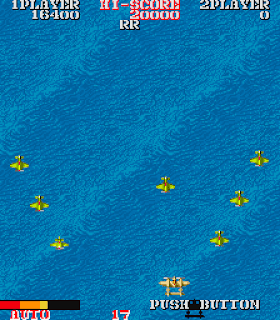- Release Date: 1981
- Platform(s): Arcade
- Developer: Konami
- Genre: Action
In theory, you should never lose at Frogger. The gaming world's first frog superstar has a straightforward task: to get across a highway, and then a river -- dodging vehicles in the first stretch, jumping across logs and turtles on the second. The surrounding world is obvious to its struggle: The cars speed along on their own, and the alligators and poisonous frogs that patrol the river come and go regardless of where it hops. All you have to do is spot the path through the obstacles and complete it. If you find the right trail, you can make it in seconds. The whole thing should be a cinch, because only you can put yourself in trouble; the game hardly notices you're there.
 |
| Keep your head up. |
A monster hit of the coin-operated arcade era, Frogger anticipates the pleasure of platformers like Super Mario Bros., and it appeals to players who would rather keep themselves alive than kill everything else around them. The frog's predicament draws the player into an environment that may be colourful and pleasing but is also full of threats. It's a place where shiny opportunities are put there to tempt you off the safe path, and where mastering the world breeds ridiculous joy.








































